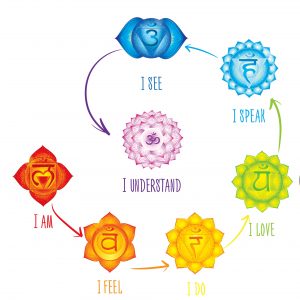0
You have 0 items in your cart

If you work in an organization, the odds are that you’ve recently heard the term culture transformation.
Although it’s a relatively old topic, there still seems to be a lot of confusion about whether it’s just another fleeting trend or a particular strategy that increases performance in organizations.
With that said, we compiled an article that explains the four most fundamental questions about cultural transformation:
Let’s get started.

We’re going to use the terms transformation and change in this post interchangeably, but to be clear, we’re discussing ”transformation’’. Change seeks to merely improve upon the past. Transformation carves an entirely new path for the future and aims to create something new that is built upon the frameworks of the past. It has often been said that a butterfly is a transformation and not just a better caterpillar.
To understand this more closely, we will start by defining culture. According to Richard Barrett, organizational culture is defined as ”the way things are done around here.” To put it in a simple way, culture is a replica of the values, beliefs, and behaviors of a group of people; that determines their ”personality’’. It is who they are, what they stand for. It is what defines them, and what distinguishes them from other organizations.
This definition tells us three essential and interconnected things about culture:

It is Holistic

It is Social

It is Learned

Culture develops over time, and it strengthens as practices and ideas are exchanged from person to person until they eventually become a part of the organization. Once a culture is rooted, it can be a very powerful thing, one that is may be difficult to change.
As such, transforming a rooted culture is quite a challenge, but that’s not to say it’s impossible. Barrett’s definition tells us a fourth and very important thing about culture: it determines employees ”personality’’- this simply means it can be changed. After all, personality can be changed.
Even then, transforming a company’s culture is never easy, and since it’s such a powerful force, it has a universal trait: the more that a culture needs to change, the more it is likely to resist the change.
Cultural transformation starts with the personal transformation of leaders. Organizations do not transform. People do.
To successfully change your culture, you not only have to change the behaviors and values of the current leaders, but you also need to change the organizational legacy of past leaders (the values and beliefs embedded in the organization’s policies, systems, and structures.)

The results found from the cultural values assessment will give your organization a roadmap for transformation and allow you to identify the key performance indicators, for instance, the cultural entropy score, the level of values alignment, and the most crucial value indicators.
To transform the culture in your organization, you will need to make changes at two major levels: at the level of the company as a whole; and at the level of teams, units and departments. This will be done by working with leaders in the various units to reduce the level of cultural entropy (dysfunction) that is in the organization.

Every business has a culture. Sometimes it is well defined and promoted. Sometimes it just developed, unintentionally, overtime. Other times, it is the result of a combination of different cultures. Either way, every cultural transformation begins with something.
It’s changing from one culture to another, or it may be changing a small aspect of a larger culture. For instance, your organization may have a strong culture in all areas, except customer service. They want to keep their current culture but change customer service. In this case, the transformation is not of the whole organizational culture, but only of a single component.
There are four main steps involved in transforming an organization’s culture:


Only the wisest and stupidest of men never change.
With the right work environment, your employees want to come to work every day- and are also less likely to quit. Given that it costs thousands of dollars to train and recruit new employees each year keeping your current employees happy makes solid business sense.

For example, if employees always need to check in with their managers, the existing culture is one in which people are either too reluctant to have their own opinion, or the management is too stifling. Creativity and innovation are limited. Or people are frustrated by the mindset, ‘my boss is always working late, and I can’t possibly leave until he leaves.”
As a result, cultural entropy (culture-driven fear) increases. And as cultural entropy increases so does employee unhappiness. At this point, your staff is just punching bags — entire rift from the loyal ambassadors you want them to be. When your organization lacks a strong culture, it will eventually find its way into every unit, level, and department.

The good news is that cultural transformation can happen faster with an effective initiative from leaders who instill confidence in their staff. In some cases, cultural transformation can be immediate. Small changes can be realized immediately through demonstration of new cultural behaviors.
Great leadership is critical to sustained positive cultural transformation. Leaders who build great working environments, instill trust, communicate effectively and are consistent with their behaviors, create positive cultural transformation.
According to the Barrett Values Model, cultural transformation is evolutionary in nature. The whole journey of change covers both internal and external environments and the gradual sense of identity regarding who we are.

1. Survival. In this level, employees are focusing on everything related to physical survival. It comprises values such as health, safety, self-discipline and wealth.
2. Relationship. In the second level, employees begin to form relationships at the workplace. They gain values such as communication, respect and conflict resolution.
3. Self-esteem. Once they have established meaningful relationships, they begin to gain recognition at a personal level. The values in this level include personal growth and success.
4. Transformation. Cultural transformation begins. At this point, employees tend to be more accountable, independent and responsible for the decisions they make.
5. Internal Cohesion. At this level, employees become more clear, active and innovative. They take the time to pause and reflect on decisions. They think in terms of achieving organizational goals rather than carrying out job responsibilities.
6. Making a Difference. . Employees operating at this level have developed a variety of skills. They have a sense of active involvement in their outside world. They are driven by the issues around them to create an impact on the immediate environment and the society at large.
7. Service. . At this level, employees focus on service to other people. They identify with the society and are ready and willing to infuse their knowledge and wisdom to every level of the human perspective. They are active in matters surrounding human rights, justice, and cohesion.

In early 2008, Kees Kruythoff, the new chairman, launched a transformational effort to reignite growth. He saw a need to address not only the strategic hurdles but also the organizational culture as well.
He came up with five big ideas: 1) to accelerate growth; 2) to create sustainable transformation; 3) to increase revenue; 4) to identify capabilities required to boost business, and 5) manage key performance indicators.
THE PROCESS: 1) He conducted a cultural values assessment after every six months; 2) Maintained discipline among workers for 36 months; 3) Ensured that leaders created a positive culture; 4) Took everyone through a journey of personal reflection about values and the culture they desired to create; 5) Established regular, consistent practices.
THE OUTCOME: 1) Revenue grew by 3 % in 2008, 7% in 2009 and 14% by 2010; 2) The amount of cultural entropy feel from 37% to 19%, and then to 10% in 2010; 3) From a culture characterised by internal competition, short-term focus and caution, people now experienced business with long-term goals, teamwork, shared vision and employee happiness.

Unless you are prepared to give up something valuable you will never be able to truly change at all, because you’ll be forever in the control of things you can’t give up.
This Privacy Policy describes how SmartMinds Enterprise OÜ (“SmartMinds”, “we”, “us” or “our”) handles information about yourself that you may provide us with through your use of the Site or Service (“Personal Information”) and should be read along with our Terms of Use posted here, and all other operating rules and additional terms and conditions published on our Site.
SmartMinds is committed to keeping your information secure and managing it in accordance with our legal responsibilities under privacy and data protection laws where we operate. SmartMinds uses your Personal Information only in accordance with this Privacy Policy and Applicable Law. SmartMinds does not sell your Personal Information to third parties. Any capitalized terms not defined in this Privacy Policy are defined in the Terms of Use.
We employ the use of cookies. By using SmartMinds‘s website you consent to the use of cookies in accordance with SmartMinds’s privacy policy.
Most of the modern day interactive web sites use cookies to enable us to retrieve user details for each visit. Cookies are used in some areas of our site to enable the functionality of this area and ease of use for those people visiting. Some of our affiliate / advertising partners may also use cookies.
Unless otherwise stated, SmartMinds and/or it’s licensors own the intellectual property rights for all material on SmartMinds All intellectual property rights are reserved. You may view and/or print pages from https://smartminds.one for your own personal use subject to restrictions set in these terms and conditions.
You must not:
We will approve link requests from these organisations if we determine that: (a) the link would not reflect unfavourably on us or our accredited businesses (for example, trade associations or other organisations representing inherently suspect types of business, such as work-at-home opportunities, shall not be allowed to link); (b)the organisation does not have an unsatisfactory record with us; (c) the benefit to us from the visibility associated with the hyperlink outweighs the absence of SmartMinds; and (d) where the link is in the context of general resource information or is otherwise consistent with editorial content in a newsletter or similar product furthering the mission of the organisation.
These organisations may link to our home page, to publications or to other Web site information so long as the link: (a) is not in any way misleading; (b) does not falsely imply sponsorship, endorsement or approval of the linking party and its products or services; and (c) fits within the context of the linking party’s site.
If you are among the organizations listed in paragraph 2 above and are interested in linking to our website, you must notify us by sending an e-mail to Please include your name, your organisation name, contact information (such as a phone number and/or e-mail address) as well as the URL of your site, a list of any URLs from which you intend to link to our Web site, and a list of the URL(s) on our site to which you would like to link. Allow 2-3 weeks for a response.
Approved organizations may hyperlink to our Web site as follows:
No use of (name)’s logo or other artwork will be allowed for linking absent a trademark license agreement.
Without prior approval and express written permission, you may not create frames around our Web pages or use other techniques that alter in any way the visual presentation or appearance of our Web site.
We shall have no responsibility or liability for any content appearing on your Web site. You agree to indemnify and defend us against all claims arising out of or based upon your Website. No link(s) may appear on any page on your Web site or within any context containing content or materials that may be interpreted as libelous, obscene or criminal, or which infringes, otherwise violates, or advocates the infringement or other violation of, any third party rights.
We reserve the right at any time and in its sole discretion to request that you remove all links or any particular link to our Web site. You agree to immediately remove all links to our Web site upon such request. We also reserve the right to amend these terms and conditions and its linking policy at any time. By continuing to link to our Web site, you agree to be bound to and abide by these linking terms and conditions.
If you find any link on our Web site or any linked web site objectionable for any reason, you may contact us about this. We will consider requests to remove links but will have no obligation to do so or to respond directly to you.
Whilst we endeavour to ensure that the information on this website is correct, we do not warrant its completeness or accuracy; nor do we commit to ensuring that the website remains available or that the material on the website is kept up to date.
We have a 30-day Money Back Guarantee when purchasing Realized Mind, all we ask if that within the 30 days to complete the learning experience and if you truly feel you did not receive any value from the experience we are happy to refund your payment and close your account.
To the maximum extent permitted by applicable law, we exclude all representations, warranties and conditions relating to our website and the use of this website (including, without limitation, any warranties implied by law in respect of satisfactory quality, fitness for purpose and/or the use of reasonable care and skill). Nothing in this disclaimer will:
The limitations and exclusions of liability set out in this Section and elsewhere in this disclaimer: (a) are subject to the preceding paragraph; and (b) govern all liabilities arising under the disclaimer or in relation to the subject matter of this disclaimer, including liabilities arising in contract, in tort (including negligence) and for breach of statutory duty.
To the extent that the website and the information and services on the website are provided free of charge, we will not be liable for any loss or damage of any nature.
